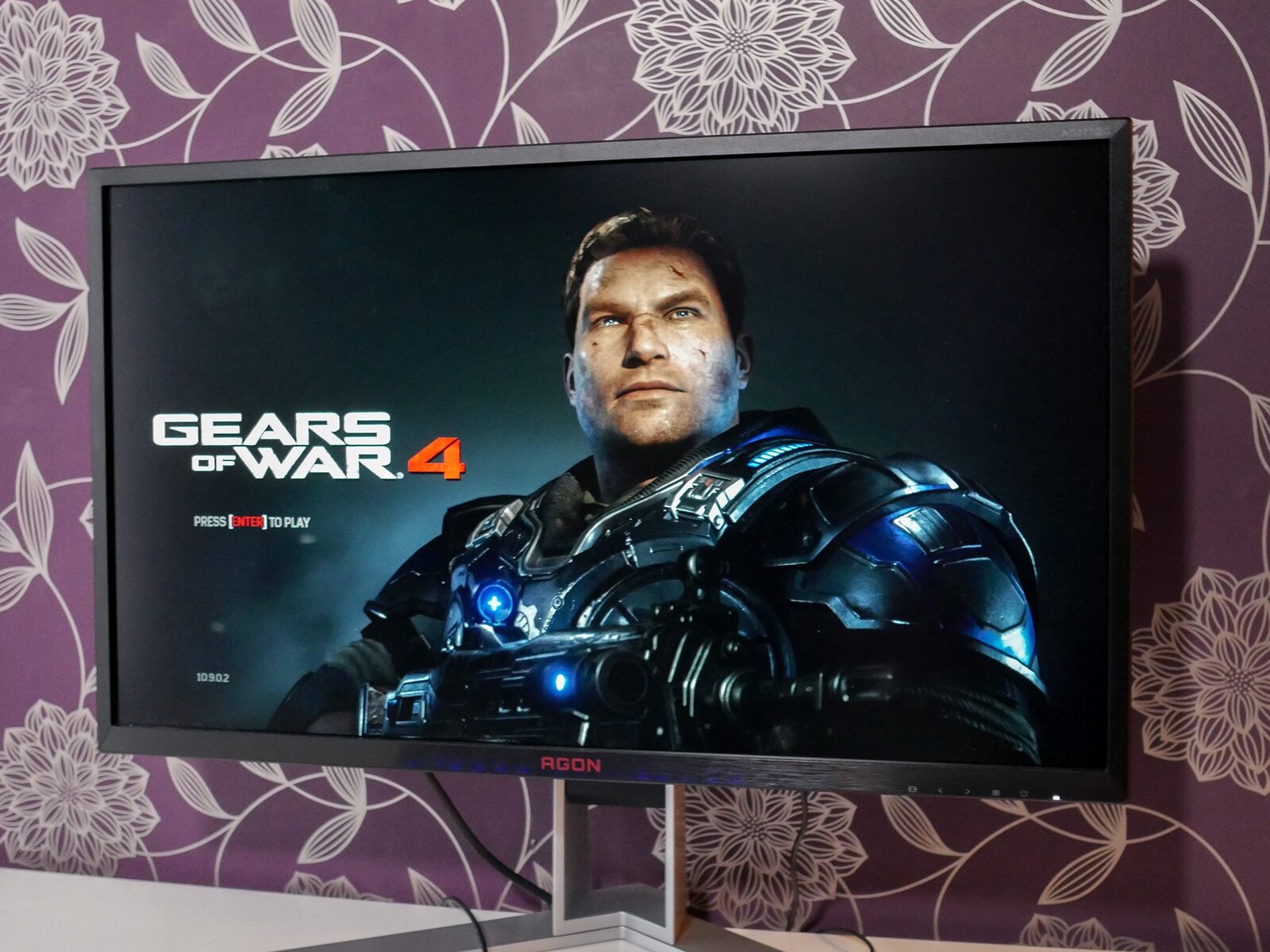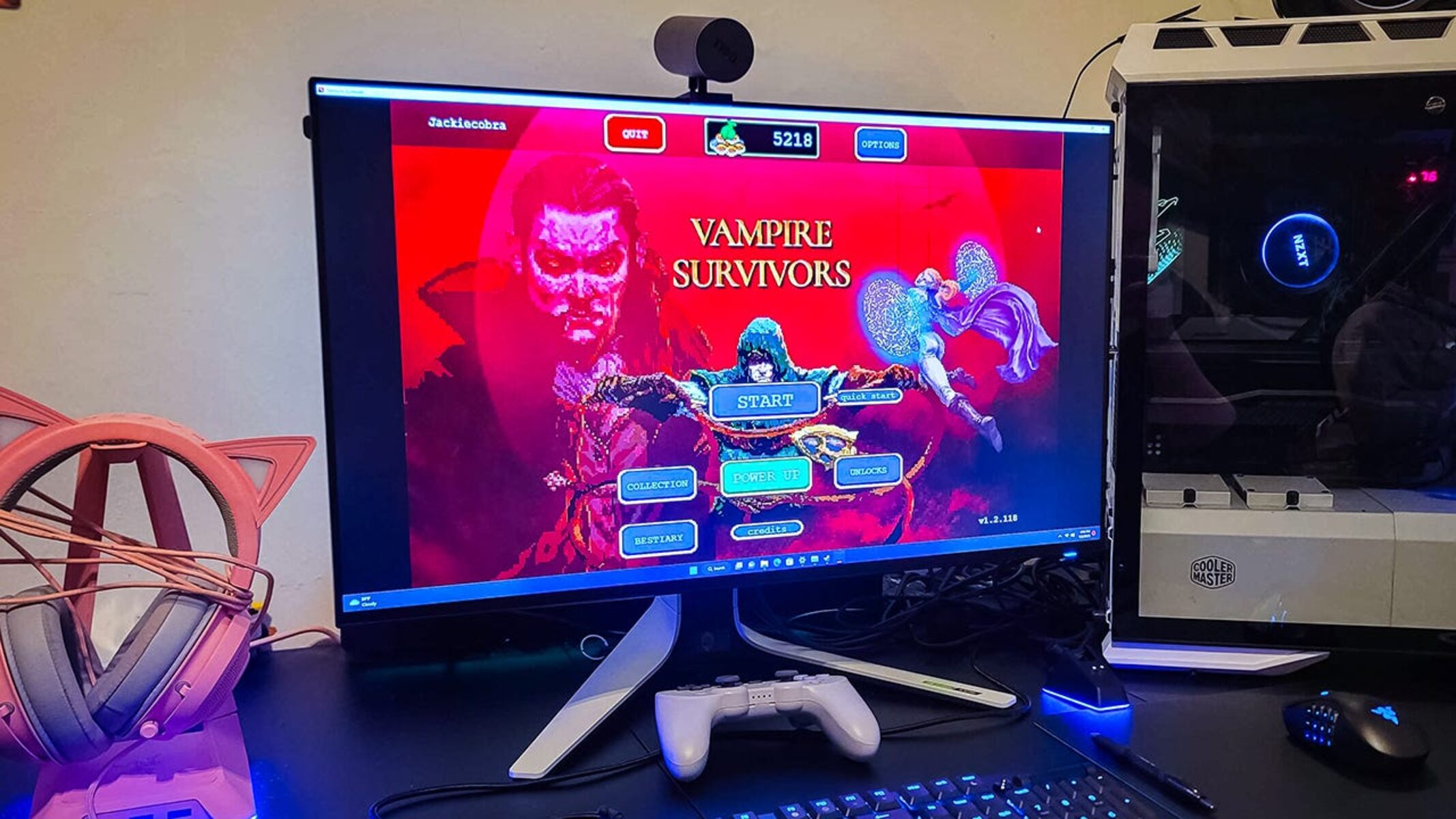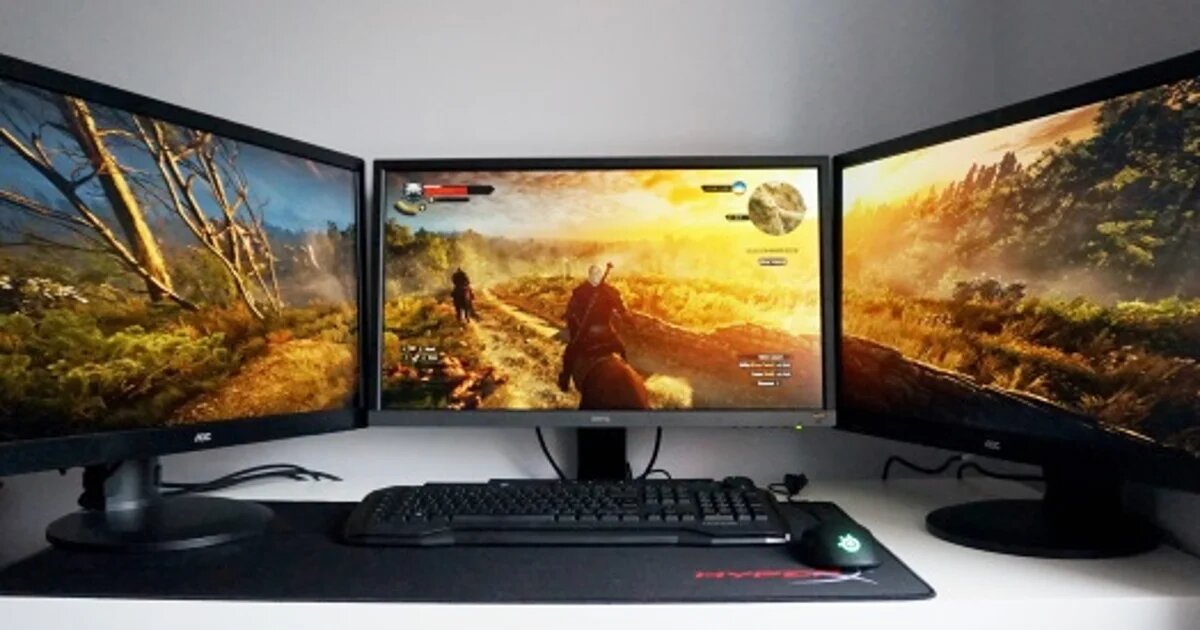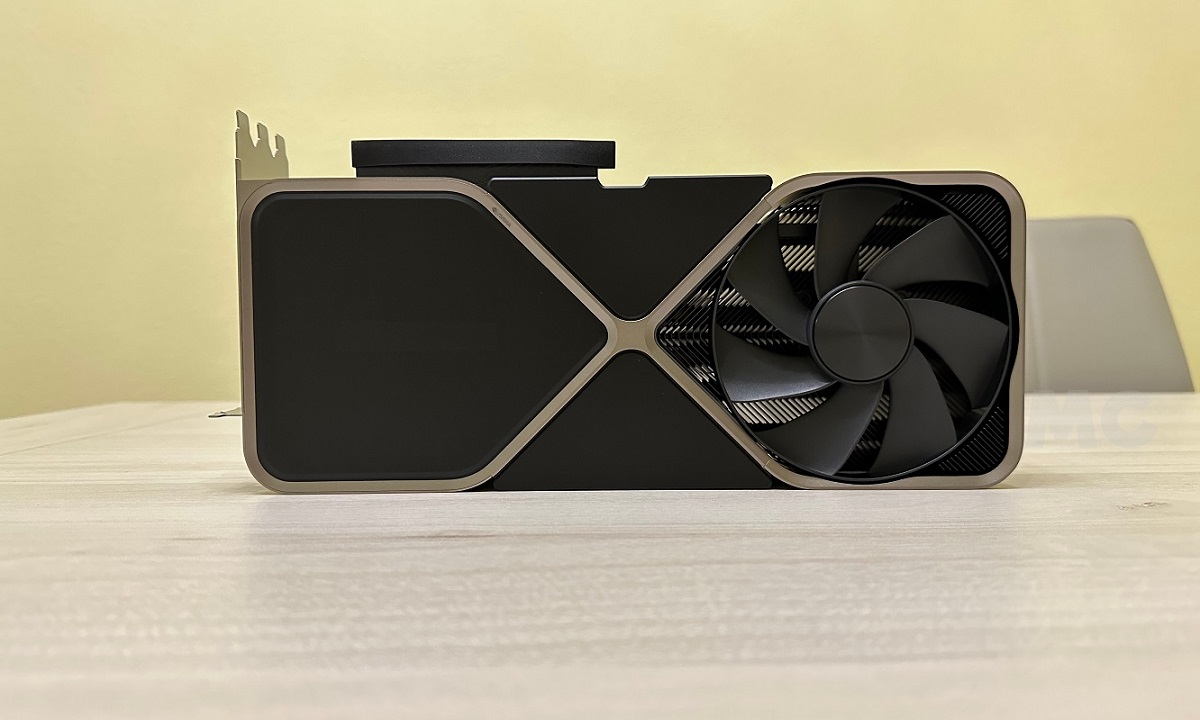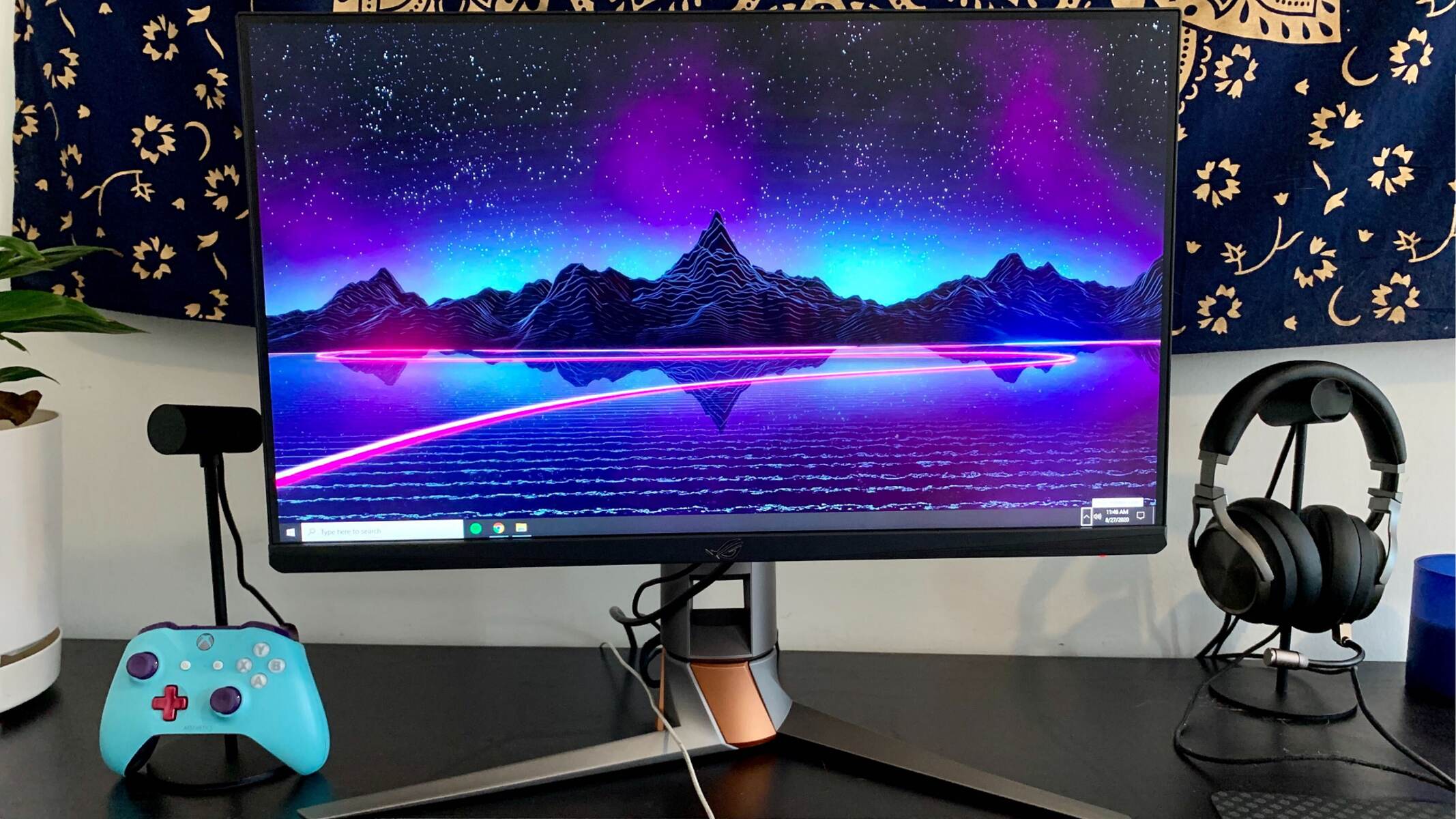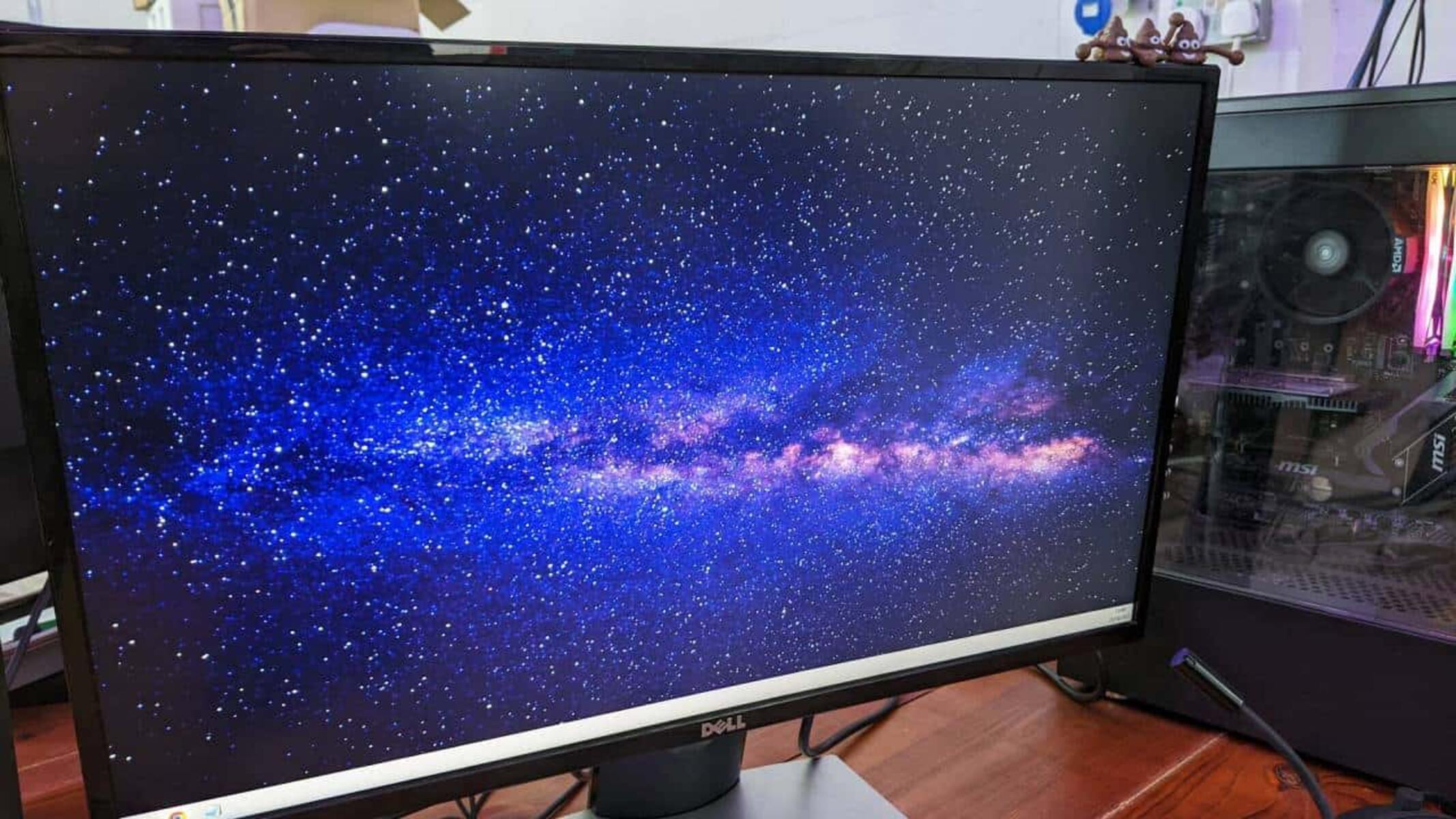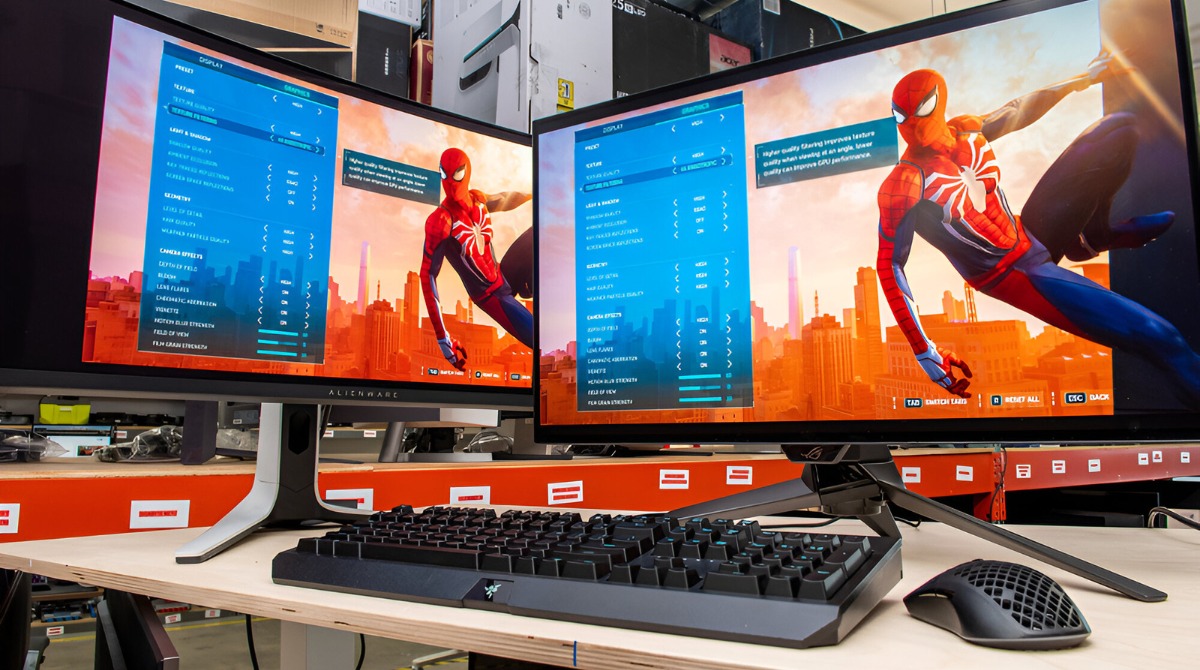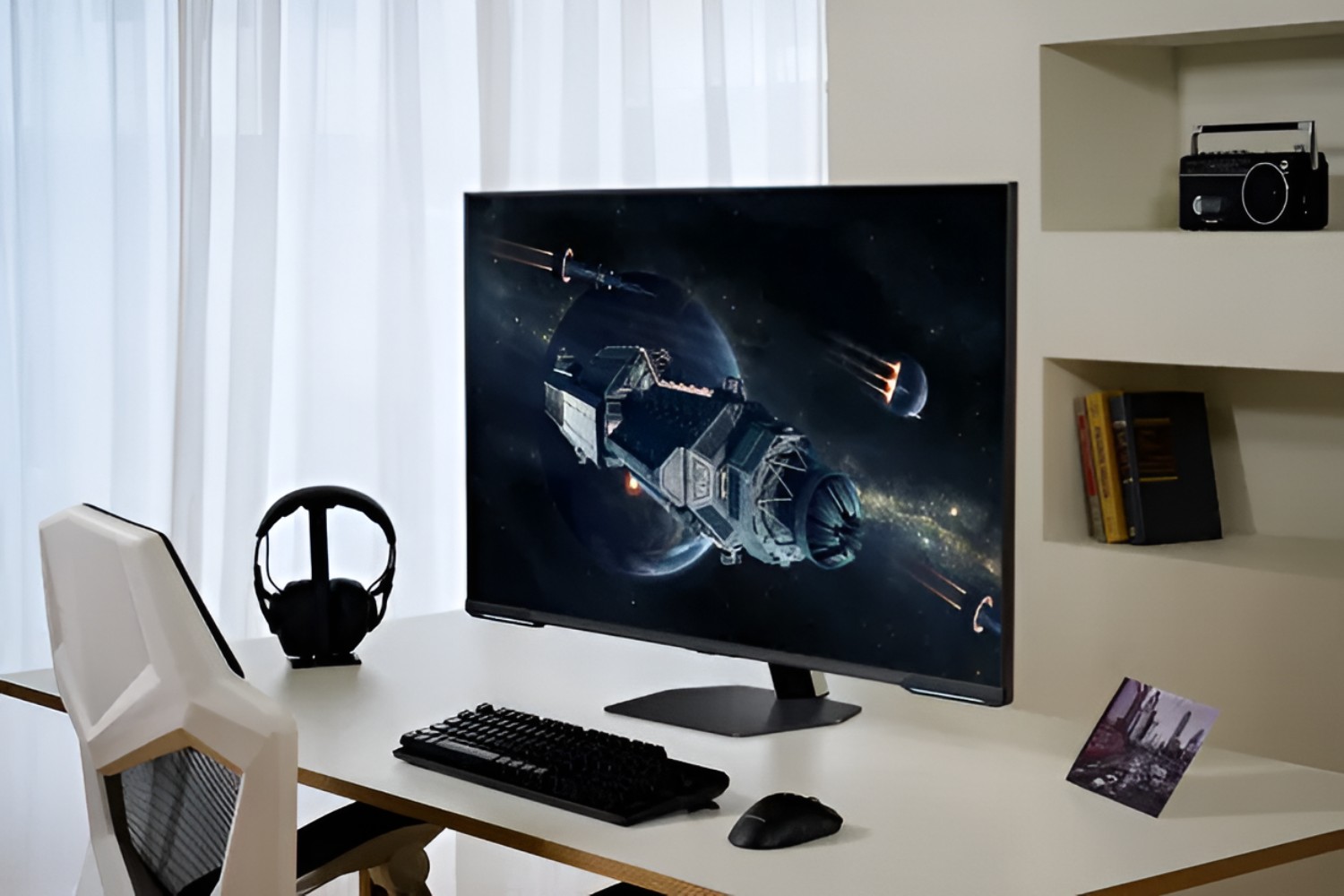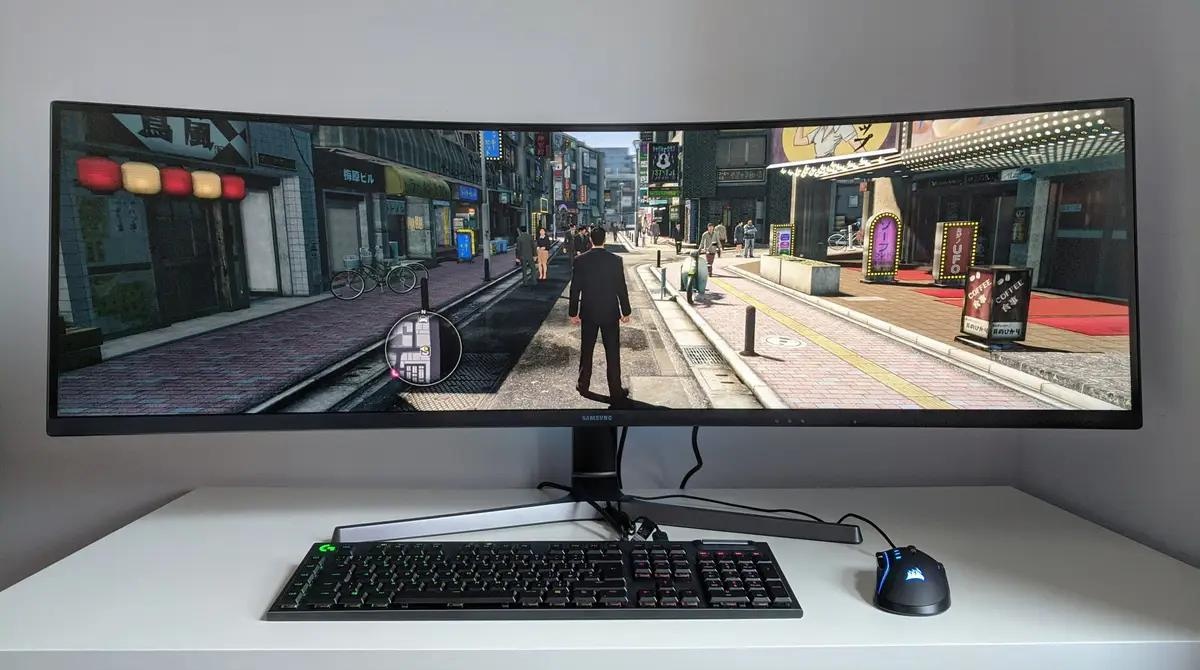Understanding Resolution
In the world of gaming, resolution refers to the number of pixels displayed on a monitor’s screen. It is a crucial factor that determines the clarity and level of detail in visual content. Understanding resolution is essential when choosing a gaming monitor that can deliver an immersive and visually stunning experience.
Resolution is typically measured in pixels, represented by the number of dots horizontally and vertically on the screen. For example, the popular Full HD resolution, also known as 1080p, has a pixel count of 1920 x 1080. The higher the number of pixels, the sharper and more lifelike the images will appear.
When it comes to resolution, it’s important to consider both the gaming monitor’s native resolution and the resolution supported by your gaming system. The native resolution is the maximum resolution that a monitor can display without scaling or interpolation. It is recommended to utilize the native resolution for optimal visual quality.
Resolution also has an impact on framerate and system performance. Higher resolutions require more processing power from your graphics card, as it needs to render a greater number of pixels. Therefore, it’s essential to ensure that your system can handle the chosen resolution without compromising performance.
Another factor to consider is the display size and viewing distance. Higher resolutions offer more detail, but if the monitor is too small or the viewing distance is too far, the difference may not be noticeable. On the other hand, if the screen is large and the viewing distance is close, a low resolution may result in pixelation and a lack of sharpness.
In summary, resolution plays a significant role in gaming visuals, impacting the level of detail, clarity, and overall immersion. Understanding the native resolution of your gaming monitor, considering the capabilities of your graphics card, and matching it with the appropriate display size and viewing distance are crucial factors to consider when choosing the right resolution for your gaming setup.
Importance of Resolution in Gaming
Resolution is a key factor in the gaming experience, as it directly impacts the visual quality and immersion. The choice of resolution can significantly enhance or diminish your gaming adventure. Here are some reasons why resolution is important in gaming:
1. Visual Clarity: The higher the resolution, the sharper and more detailed the visuals appear on the screen. This allows you to see intricate textures, fine details, and realistic graphics, enhancing the overall gaming experience.
2. Immersion: Gaming is all about immersing yourself in a virtual world. Higher resolutions create a more realistic environment that draws you deeper into the game. It allows you to appreciate the intricate design of game worlds and characters, making you feel like a part of the action.
3. Competitive Advantage: In multiplayer games, having a higher resolution can provide a competitive edge. More pixels allow you to spot enemies with greater clarity, enables smoother movement tracking, and enhances your overall situational awareness.
4. Cinematic Experience: Many modern games offer stunning cinematic sequences and intricate storytelling. Higher resolutions enable you to fully appreciate the breathtaking visuals and immerse yourself in the narrative, making the gaming experience feel more like a movie.
5. Future-Proofing: As technology advances, games are becoming more demanding in terms of graphics and visuals. Choosing a higher resolution now ensures that your gaming setup remains relevant and capable of running future games at their best visual quality.
Ultimately, the importance of resolution in gaming lies in the balance between visual quality, performance, and personal preference. It’s crucial to find the right resolution that suits your gaming needs, taking into consideration factors such as your computer’s capabilities, monitor size, and viewing distance. By choosing the optimal resolution, you can unlock the full potential of your gaming experience and enjoy games in all their visual glory.
Common Resolutions for Gaming Monitors
Gaming monitors come in various resolutions, each offering a different level of visual quality and immersion. Here are some of the most common resolutions you’ll encounter when shopping for a gaming monitor:
1. Full HD (1920 x 1080): Also known as 1080p, Full HD resolution has been the standard for gaming monitors for quite some time. It provides a good balance between visual quality and performance, offering sharp and detailed visuals on monitors of all sizes. Full HD is an excellent choice for casual gamers or those on a budget.
2. Quad HD (2560 x 1440): Quad HD, also known as 1440p, offers a substantial upgrade in visual quality compared to Full HD. With more pixels on the screen, games appear sharper and more detailed. Quad HD is a popular choice for gamers who want a higher level of immersion without compromising performance.
3. Ultra HD/4K (3840 x 2160): Ultra HD or 4K resolution is the pinnacle of visual fidelity in gaming. With four times the number of pixels as Full HD, games rendered in 4K offer incredible levels of detail, crispness, and realism. However, achieving smooth gameplay at 4K requires a powerful graphics card and ample system resources.
4. Ultra-Wide (3440 x 1440): Ultra-wide monitors have gained popularity in recent years for their immersive gaming experience. With an aspect ratio of 21:9, these monitors offer a wider field of view, allowing you to see more of the game world. Ultra-wide monitors often come with Quad HD or Ultra HD resolutions, further enhancing the visual quality.
When choosing a resolution for your gaming monitor, consider the capabilities of your graphics card and the size of the monitor. Higher resolutions require more processing power, so ensure that your system can handle the chosen resolution without sacrificing performance.
In addition, take into account the type of games you play. Competitive gamers may prefer a lower resolution for higher frame rates, while those who enjoy visually stunning games may opt for a higher resolution to fully appreciate the graphics.
Remember, the choice of resolution ultimately comes down to personal preference and the balance between visual quality and performance. Carefully consider your gaming needs and budget to make the best decision for your gaming setup.
Full HD (1920 x 1080)
Full HD, also known as 1080p, is one of the most common resolutions for gaming monitors. It offers a balance between visual quality and affordability, making it a popular choice for gamers of all levels. Here’s what you need to know about Full HD resolution:
1. Sharp and Detailed Visuals: Full HD resolution packs a total of 2,073,600 pixels into a 1920 x 1080 display. With this pixel density, games appear sharp, crisp, and highly detailed. You’ll be able to see textures, characters, and environments with great clarity, enhancing your gaming experience.
2. Smooth Performance: Full HD resolution is relatively easier to drive for most gaming systems compared to higher resolutions like 1440p or 4K. It puts less strain on your graphics card, allowing for smoother gameplay and higher frame rates. This is particularly beneficial for competitive gamers who prioritize responsive and lag-free gaming experiences.
3. Wide Availability: Full HD monitors are widely available across various brands and price ranges. Whether you’re on a tight budget or looking for a high-end gaming monitor, you’ll find a wide selection of Full HD options to choose from. This availability makes it accessible to gamers of all budgets.
4. Versatile Compatibility: Full HD resolution is compatible with a wide range of gaming systems, including consoles and PCs. Most modern gaming consoles, such as PlayStation 4 and Xbox One, are designed to output games at 1080p resolution. This ensures that you can enjoy your favorite games on a Full HD monitor without any issues.
5. Ideal for Smaller Monitors: Full HD resolution is particularly well-suited for smaller monitor sizes, typically ranging from 21 to 24 inches. In these sizes, the pixel density is high enough to provide a sharp image without any visible pixelation. This makes Full HD an excellent choice for gamers who prefer compact gaming setups or have limited desk space.
In summary, Full HD resolution offers sharp visuals, smooth performance, and wide availability, making it a popular choice among gamers. While it may not provide the same level of detail as higher resolutions, it remains a reliable and cost-effective option for gaming enthusiasts. Consider your budget, gaming preferences, and monitor size when deciding if Full HD is the right resolution for your gaming setup.
Quad HD (2560 x 1440)
Quad HD, also known as 1440p, is a resolution that offers a significant upgrade in visual quality compared to Full HD. With a pixel count of 2560 x 1440, Quad HD provides gamers with sharper details and a more immersive experience. Let’s explore the key aspects of Quad HD resolution:
1. Enhanced Visual Clarity: With 3,686,400 pixels on the screen, Quad HD resolution delivers a higher level of detail compared to Full HD. The increased pixel density ensures that games appear sharper, more vibrant, and highly defined. You’ll notice improved texture details, character expressions, and environmental elements, allowing you to appreciate the finer aspects of the game world.
2. Immersive Gaming Experience: Quad HD takes your gaming experience to the next level by offering a more immersive environment. The additional pixels create a broader field of view, making the game world feel larger and more expansive. This enhanced immersion can transport you deeper into the game’s storyline and allow for a more engaging and captivating gaming experience.
3. Balanced Performance and Visuals: While Quad HD requires more graphics processing power than Full HD, it strikes a good balance between visual quality and performance. Most modern gaming graphics cards can handle games at 1440p resolution without sacrificing frame rates or experiencing significant drops in performance. This makes Quad HD a viable option for gamers who want a visual upgrade without compromising on smooth gameplay.
4. Ideal for Large Monitors: Quad HD resolution shines on larger monitor sizes, usually 27 inches and above. The higher pixel count ensures that games still appear sharp and detailed on bigger screens, without any noticeable pixelation. If you prefer a larger display or enjoy the immersive experience of ultra-wide monitors, Quad HD resolution is an excellent choice to fully appreciate the expanded screen real estate.
5. Future-Proofing: As gaming technology advances, more demanding games with improved graphics are released. Quad HD resolution acts as a suitable compromise between Full HD and 4K, ensuring that your gaming setup remains visually relevant for the foreseeable future. Upgrading to Quad HD allows you to immerse yourself in the latest games while maintaining good performance levels.
In summary, Quad HD resolution offers enhanced visual clarity, an immersive gaming experience, and future-proofing for gaming setups. It strikes a balance between performance and visual quality, making it a popular choice among gamers seeking an upgrade from Full HD. Consider factors such as monitor size, graphics card capability, and personal preference when deciding if Quad HD is the right resolution for your gaming needs.
Ultra HD/4K (3840 x 2160)
Ultra HD, also known as 4K resolution, is the epitome of visual excellence in gaming. With a pixel count of 3840 x 2160, 4K offers an incredibly high level of detail and crispness, resulting in breathtaking visuals. Here are the key aspects of gaming in Ultra HD/4K resolution:
1. Unparalleled Visual Fidelity: 4K resolution packs a whopping 8.3 million pixels onto your monitor’s display. This incredible pixel density ensures that games are extraordinarily sharp and detailed. You’ll notice intricate textures, realistic lighting, and lifelike character models, immersing you in a visually stunning virtual world.
2. Enhanced Immersion: The level of detail and realism provided by 4K resolution takes the gaming experience to new heights of immersion. Whether you’re exploring vast open-world environments or engaging in intense battles, the finer details and intricate visuals make you feel like you’re truly part of the game.
3. Large Display Advantage: 4K resolution truly shines on larger displays, particularly those larger than 27 inches. The increased pixel density ensures that games are incredibly sharp, even on larger screens. The larger display size allows you to fully appreciate the beauty and intricacies of game worlds, providing an unforgettable gaming experience.
4. Gaming as a Spectator: Due to its exceptional level of detail, 4K resolution is not only fantastic for playing games but also for spectating. If you enjoy streaming or sharing your gameplay with others, 4K resolution allows viewers to see every nuance, enhancing the visual appeal of your gaming content.
5. Demanding Hardware Requirements: It’s important to note that gaming in 4K resolution requires a powerful graphics card and robust system specifications. 4K gaming requires more processing power and VRAM, which can strain mid-range and older graphics cards. Ensure that your hardware is up to the task and capable of delivering smooth gameplay at this resolution.
6. Future-Proofing: As technology advances, more games are designed to take advantage of 4K resolution. Investing in a 4K gaming monitor ensures that your gaming setup is future-proofed and capable of delivering the best possible visual quality for years to come.
In summary, Ultra HD/4K resolution offers unparalleled visual fidelity, enhanced immersion, and a truly remarkable gaming experience. However, it is important to consider the demanding hardware requirements and ensure that your system can handle 4K gaming without compromising performance. If you’re looking for the utmost in visual excellence and have the necessary hardware, 4K resolution is an outstanding choice to elevate your gaming experience to new heights.
Ultra-Wide (3440 x 1440)
Ultra-wide monitors have gained popularity in recent years, offering a unique gaming experience with their wider aspect ratio. With a resolution of 3440 x 1440, ultra-wide monitors provide gamers with a wider field of view, enhanced immersion, and a more cinematic gameplay. Let’s explore the key aspects of gaming in ultra-wide resolution:
1. Expanded Field of View: Ultra-wide monitors offer a wider aspect ratio, typically 21:9, compared to the standard 16:9 aspect ratio of traditional monitors. This additional screen real estate gives you a broader field of view, allowing you to see more of the game world. You’ll have a wider perspective, creating a more immersive gaming experience.
2. Enhanced Immersion: The wider aspect ratio of ultra-wide monitors adds a new level of immersion to your gaming experience. With a larger viewing area, games feel more cinematic and atmospheric. The increased horizontal span allows you to appreciate the details of game environments, enhancing realism and drawing you deeper into the virtual world.
3. Immerse Yourself in Every Genre: From open-world exploration to first-person shooters to racing games, ultra-wide is suited for a wide range of gaming genres. Whether you’re racing around a track, exploring a detailed fantasy world, or engaging in fast-paced combat, the wider field of view enhances your situational awareness and immersion, adding an extra dimension of enjoyment to every game.
4. Multitasking and Productivity: Ultra-wide monitors are not only great for gaming but also for multitasking and productivity. The wide aspect ratio allows you to have multiple windows side-by-side, making it easier to work on multiple projects or monitor chat windows while gaming. This versatility adds value to the monitor beyond just gaming.
5. Graphics and Performance Considerations: It’s important to consider the graphics and performance implications of gaming at ultra-wide resolutions. Ultra-wide resolutions require a more powerful graphics card to effectively render the additional pixels. Ensure that your system can handle the demands of ultra-wide gaming to maintain smooth frame rates and optimal visual quality.
6. Appropriate Game Support: While many games support ultra-wide resolutions out of the box, there are some titles that may require tweaking or third-party software to properly adapt to the wider aspect ratio. Before investing in an ultra-wide monitor, research game compatibility to ensure that your favorite titles will fully utilize the monitor’s wide field of view.
In summary, gaming on an ultra-wide monitor with a resolution of 3440 x 1440 offers an expansive field of view, enhanced immersion, and a more cinematic gaming experience. The wider aspect ratio is suitable for various gaming genres and adds value to productivity tasks. Be sure to consider the graphics requirements and game support before diving into ultra-wide gaming, and enjoy the immersive and panoramic visuals that only ultra-wide monitors can provide.
Considerations When Choosing a Resolution
When choosing a resolution for your gaming monitor, several factors need to be taken into consideration. Each resolution has its own advantages and limitations, and finding the right one for your gaming needs is essential. Here are some key considerations to keep in mind:
1. Graphics Card and Resolution Compatibility: Ensure that your graphics card can handle the resolution you desire. Higher resolutions require more processing power, so it’s vital to have a capable graphics card that can deliver smooth and lag-free gameplay. Check the recommended system requirements for your favorite games to identify the ideal resolution that your graphics card can support.
2. Display Size and Viewing Distance: The size of your gaming monitor and your viewing distance play a significant role in determining the appropriate resolution. Higher resolutions like 1440p or 4K are best suited for larger displays, while lower resolutions like 1080p may be sufficient for smaller screens. Consider the distance at which you typically sit from the monitor to ensure that the chosen resolution will provide a crisp and enjoyable gaming experience.
3. Refresh Rate and Response Time: Resolution should not be the only factor you consider; pay attention to the monitor’s refresh rate and response time as well. Higher refresh rates, such as 144Hz or even 240Hz, provide smoother motion and reduced motion blur, enhancing the overall gaming experience. A low response time helps to minimize input lag and ensure fast-paced gameplay feels responsive and precise.
4. Gaming Genres and Resolution Preferences: Consider the types of games you enjoy playing the most. Different gaming genres have varying preferences when it comes to resolution. Competitive gamers often prioritize higher frame rates and lower resolutions for a smoother experience, while those who enjoy visually stunning, story-driven games may prefer higher resolutions for a more immersive and detailed visual experience.
5. Budget and Future-Proofing: Take your budget into account when choosing a resolution. Higher resolutions generally come with a higher price tag, not only for the monitor but also for the hardware needed to support it. Consider your budgetary limitations and balance them with your desire for visual quality. Additionally, keep in mind that technology is constantly evolving, so investing in a resolution that is future-proofed can ensure your gaming setup remains relevant for a longer period.
By taking these considerations into account, you can make an informed decision when choosing the right resolution for your gaming monitor. Remember, there is no one-size-fits-all resolution, and what works best for one person may not be ideal for another. Tailor your choice of resolution to your specific needs and preferences to create the most enjoyable and visually satisfying gaming experience.
Graphics Card and Resolution Compatibility
When choosing a resolution for your gaming experience, it is crucial to consider the compatibility between your graphics card and the desired resolution. The graphics card plays a key role in rendering and displaying the graphics on your monitor, and different resolutions require varying levels of processing power. Here are some important factors to keep in mind when considering the compatibility between your graphics card and resolution:
1. Native Resolution: Graphics cards are designed to work optimally with specific resolutions, known as the native resolution. The native resolution is the highest resolution that a monitor can display without scaling or interpolation. It is recommended to use the native resolution to ensure the best image quality and clarity.
2. GPU Capability: Higher resolutions, such as 1440p or 4K, require more graphical processing power from your GPU. Before choosing a high-resolution monitor, ensure that your graphics card can handle the higher pixel count. Check the manufacturer’s recommendations and system requirements to determine if your GPU is capable of rendering games at the desired resolution.
3. VRAM (Video RAM) Size: The amount of VRAM on your graphics card also plays a role in resolution compatibility. Higher resolutions require more VRAM to store the frame buffers and textures, ensuring smooth rendering. Insufficient VRAM may result in performance issues, such as stuttering or frame rate drops. Make sure your graphics card has an adequate amount of VRAM for the chosen resolution.
4. Frame Rates: The resolution you choose will impact your frame rates. Higher resolutions put more strain on the GPU, reducing the overall frame rates compared to lower resolutions. Consider your desired frame rate target and ensure your graphics card can deliver consistent performance at the chosen resolution. This is particularly important for competitive gamers who prioritize high frame rates for smooth and responsive gameplay.
5. Future-Proofing: Keep in mind that technology advances at a rapid pace. If you plan to upgrade your graphics card in the future or invest in a higher-resolution monitor, consider the compatibility of your system for future upgrades. Opting for a slightly more powerful graphics card now can ensure better compatibility with higher resolutions down the line.
By ensuring compatibility between your graphics card and chosen resolution, you can have a smoother and more visually pleasing gaming experience. It is recommended to research and compare the specifications of your graphics card with the resolution you intend to use, taking into account factors such as native resolution support, GPU capability, VRAM size, and desired frame rates. This knowledge will help you make an informed decision and avoid potential issues related to resolution mismatch and performance limitations.
Display Size and Viewing Distance
When selecting a resolution for your gaming monitor, considering the display size and viewing distance is crucial to ensure an optimal visual experience. The display size, measured diagonally, and the distance at which you sit from the monitor greatly influence how textures, details, and overall clarity are perceived. Here are the key factors to understand regarding display size and viewing distance:
1. Pixel Density: Pixel density refers to how closely pixels are packed together on the screen. As the display size increases, maintaining a high pixel density is crucial to avoid individual pixels becoming noticeable, resulting in a loss of image sharpness. Higher resolutions, such as 1440p or 4K, are often preferred for larger displays to ensure a high pixel density and maintain visual fidelity.
2. Recommended Resolutions for Display Sizes: To determine the optimal resolution for your display size, you can refer to general recommendations. For example, a 24-inch monitor is typically paired with a Full HD (1080p) resolution, while a 27-inch or larger monitor is often paired with a higher resolution like Quad HD (1440p) or 4K. Following these recommendations helps ensure the right balance between pixel density and image sharpness for your display size.
3. Viewing Distance: The distance at which you sit from the monitor is just as important as the display size when choosing a resolution. A general rule of thumb is to sit at a distance that allows you to comfortably view the entire screen without straining your eyes or neck. The optimal viewing distance can depend on personal preference and the size of the monitor. As the viewing distance increases, higher resolutions may be needed to maintain image quality and prevent visible pixelation.
4. Text and Image Size: The screen resolution also affects the size of text and images displayed on the monitor. Higher resolutions fit more content on the screen, making text and images smaller. If you have difficulty reading small text or prefer larger icons and text, opting for a lower resolution may be more suitable, especially if you have a smaller display size or sit further away from the monitor.
5. Immersion and Field of View: Consider how immersive you want your gaming experience to be. Larger display sizes, paired with higher resolutions, can provide a wider field of view, enveloping you in the game world. This enhances the sense of immersion, allowing you to see more of the game environment and feel more connected to the virtual experience.
Ultimately, choosing the right resolution based on display size and viewing distance is about striking a balance between image sharpness, pixel density, and your personal preferences for immersion and comfort. Consider the general recommendations for matching resolutions to display sizes and experiment to find the combination that provides the most visually satisfying gaming experience for you.
Refresh Rate and Response Time
When selecting a resolution for your gaming monitor, it is essential to consider the refresh rate and response time. These factors affect the smoothness of gameplay, the clarity of fast-moving images, and the overall responsiveness of the monitor. Here’s what you need to know:
1. Refresh Rate: The refresh rate refers to how many times per second the monitor refreshes the image on the screen. It is measured in Hertz (Hz). A higher refresh rate, such as 144Hz or even 240Hz, provides smoother motion and reduces motion blur. This is particularly noticeable in fast-paced games where quick reactions and precise movements are crucial.
2. Motion Clarity: Higher refresh rates result in less motion blur, ensuring that fast-moving objects appear sharper and more defined on the screen. This can improve your ability to track objects in action-packed scenes, enhancing your gaming performance and overall visual experience.
3. Response Time: Response time is the time it takes for a pixel to change from one color to another, usually measured in milliseconds (ms). A lower response time means faster pixel transitions, resulting in reduced ghosting and motion blur. A faster response time helps maintain image clarity, especially during fast-paced gaming sequences.
4. Synchronization Technologies: Some monitors feature synchronization technologies like AMD FreeSync or NVIDIA G-Sync, which synchronize the monitor’s refresh rate with the graphics card’s output. This technology reduces stuttering, screen tearing, and input lag, providing a smoother and more responsive gaming experience.
5. Compatibility with Graphics Card: It’s important to ensure that your graphics card can support the desired resolution and refresh rate. Higher resolutions and refresh rates require more processing power from your GPU. Check the specifications of your graphics card to verify its compatibility with the combination of resolution and refresh rate you desire.
6. Personal Preference and Game Genre: Your personal preference and the type of games you play also play a role in choosing the right refresh rate and response time. Competitive gamers often prioritize high refresh rates and low response times for maximum responsiveness and smooth gameplay. On the other hand, gamers who focus on immersive, story-driven experiences may be more inclined to prioritize image quality and resolution over high refresh rates.
To optimize your gaming experience, consider your GPU’s capability, the desired resolution, and the types of games you enjoy playing. Depending on your preferences and priorities, striking the right balance between resolution, refresh rate, and response time can lead to a more enjoyable and immersive gaming experience.
Gaming Genres and Resolution Preferences
When deciding on the resolution for your gaming monitor, it’s important to consider the gaming genres you enjoy the most. Different genres have varying preferences when it comes to resolution, as it can impact the gameplay experience and visual immersion. Here’s how gaming genres can influence resolution preferences:
1. First-person Shooters (FPS): FPS games require quick reflexes, precision aiming, and a clear view of the battlefield. Many competitive FPS gamers prefer lower resolutions, such as 1080p, as it allows for higher frame rates and smoother gameplay. The emphasis is on fast reaction times rather than the highest level of visual fidelity.
2. Role-Playing Games (RPGs): RPGs often feature expansive worlds, detailed environments, and immersive storytelling. Higher resolutions like 1440p or 4K can enhance the visual experience, allowing players to fully immerse themselves in the richly detailed game worlds. Visual clarity and detail can bring characters and environments to life and enhance your overall RPG experience.
3. Racing and Sports Games: Racing and sports games benefit from higher resolutions that can capture the intricate details of the vehicles, tracks, and player animations. The increased pixel density of resolutions like 1440p or 4K can deliver a more visually stunning and realistic racing or sports simulation, enhancing the immersion and sense of speed.
4. Strategy and Simulation Games: Strategy and simulation games often feature intricate maps, complex interfaces, and detailed units. Higher resolutions provide more screen real estate, allowing players to view larger portions of the game world or see more information simultaneously. Resolutions like 1440p or 4K can enhance the strategic decision-making process and provide a better overall gaming experience.
5. Adventure and Story-Driven Games: Adventure and story-driven games rely heavily on captivating narratives, engaging characters, and stunning visuals. Higher resolutions like 1440p or 4K can heighten the immersion and presentation of these games, allowing you to appreciate every intricate detail and feel more connected to the storyline. The rich visual experience can enhance the emotional impact of the game’s narrative.
6. Multiplayer and Competitive Gaming: In multiplayer and competitive gaming, where every split-second matters, many players prefer lower resolutions for higher frame rates and lower input lag. Smooth gameplay and responsiveness take precedence over visual fidelity in intense, fast-paced multiplayer battles.
Ultimately, resolution preference in gaming genres can vary based on personal preference and how the game’s visuals impact your overall gaming experience. Consider the genre of games you enjoy the most, the level of immersion and visual quality desired, and compatibility with your hardware when choosing the resolution that best suits your gaming needs.
Conclusion
Choosing the right resolution for your gaming monitor is a crucial decision that can greatly impact your gaming experience. Whether you prioritize visual fidelity, smooth gameplay, or a balance between the two, several factors must be considered.
Understand the different resolutions available, from Full HD to Quad HD to Ultra HD/4K and ultra-wide options. Each resolution offers unique advantages and considerations based on visual clarity, performance requirements, and overall immersion.
Consider the compatibility between your graphics card and the desired resolution. Ensure that your GPU can handle the increased processing power required for higher resolutions to avoid compromising performance or experiencing frame rate drops.
Take into account the size of your gaming monitor and the viewing distance. Higher resolutions work best on larger displays to maintain a high pixel density, while lower resolutions may suffice for smaller screens or greater viewing distances.
Additionally, consider the refresh rate and response time of your monitor, as they influence motion clarity, smoothness, and overall responsiveness. Match the refresh rate and response time with your graphics card’s capabilities to achieve optimal performance and visual quality.
Lastly, factor in your preferred gaming genres and personal preferences. Different game genres have varying resolution preferences, with some placing more emphasis on frame rates and responsiveness, while others prioritize visual fidelity and immersion.
By carefully considering these factors and finding the right balance between visual quality, performance, and personal preferences, you can select the perfect resolution for your gaming setup. Strive for an immersive gaming experience that brings your games to life, enhances your enjoyment, and allows you to fully appreciate the intricate details and captivating worlds of the virtual realm.







